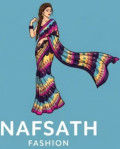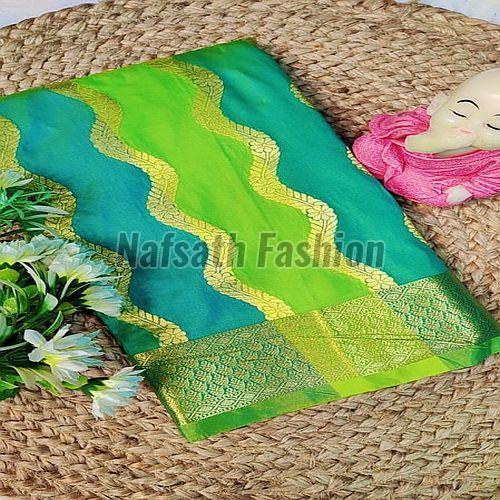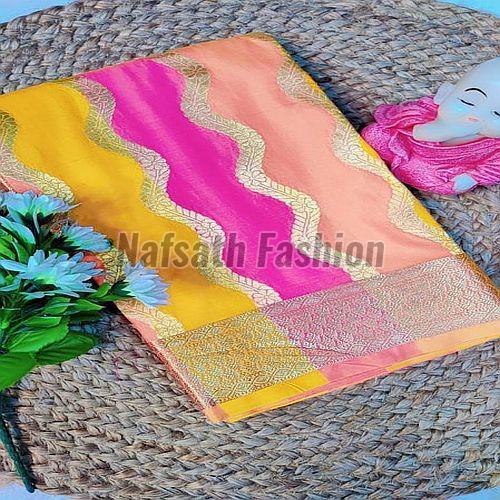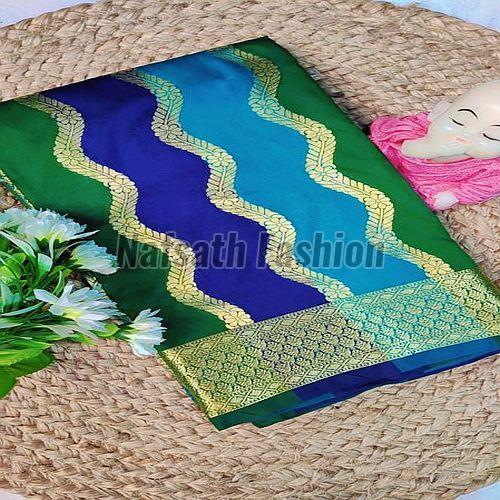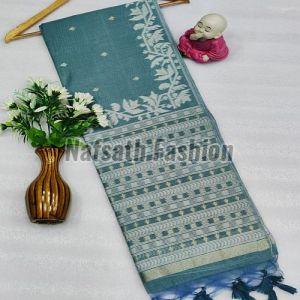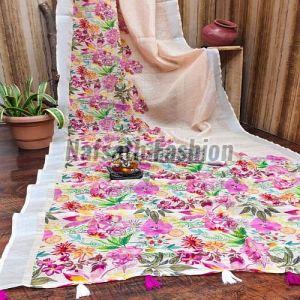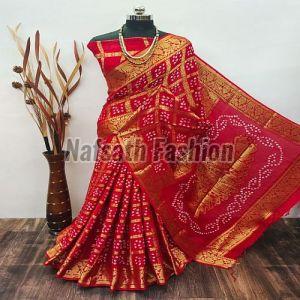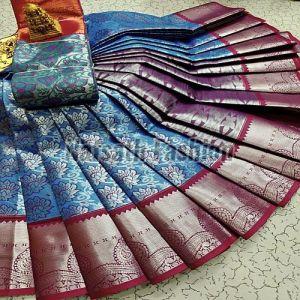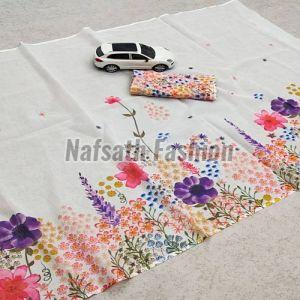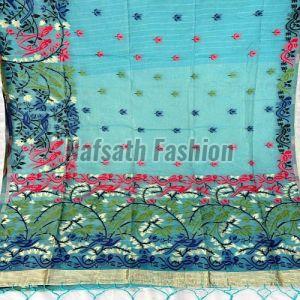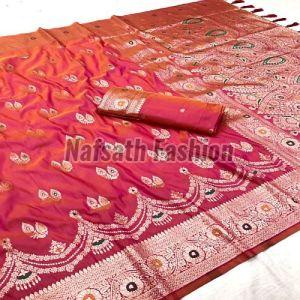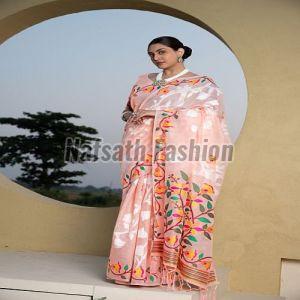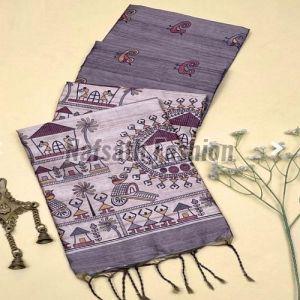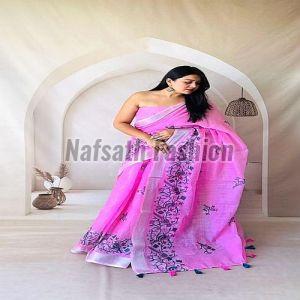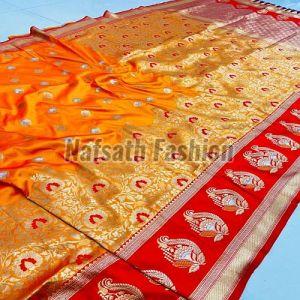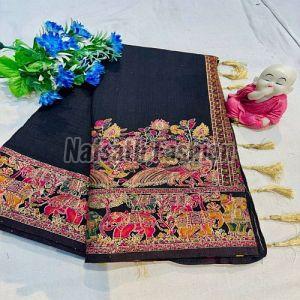GST NO. : 33BGNPN4798L1ZJ
| Business Type | Exporter, Supplier, Retailer, Trader |
| Saree Length | 7.5 Meter |
| Work Type | Zari Work |
| Pattern | Designer |
| Click to view more | |
Product Details
Set Content
With Blouse Piece
Blouse Stitch Type
Unstitched
Feature
Elegant Design, Shrink-Resistant
Ethnic Region
Indian
Wash Care
Machine Wash
Fabric
Chanderi Katan Silk
Color
Available in Different Color
Key Features:
- Silk Fabric: The base of a Banarasi saree is typically high-quality silk, often mulberry silk, known for its fine texture, natural sheen, and durability. Different types of silk like Katan (pure silk), Organza (Kora), Georgette, Shattir, Tussar, and Dupion can be used, each offering a unique look and feel.
- Zari Woven Work: The defining characteristic is the use of zari threads to create elaborate patterns and motifs that are interwoven directly into the fabric during the weaving process. This is different from embroidery, where the zari is added after the fabric is woven.
- Intricate Designs: The designs often draw inspiration from Mughal art, nature, and local traditions. Common motifs include:
- Floral and Foliage: Flowers (like lotus, marigold, jasmine), leaves, and creepers (bel buti).
- Paisley (Ambi/Kalga): A teardrop-shaped motif symbolizing fertility and life.
- Animals and Birds: Peacocks, elephants, horses, and mythical creatures like the Makara.
- Geometric Patterns: Spirals, diamonds, hexagons, and stripes.
- Architectural Motifs: Inspired by the temples and palaces of Varanasi.
- Opulent Look: The combination of the silk and the shimmering zari work gives Banarasi sarees a rich, grand, and celebratory appearance, making them popular choices for weddings, festivals, and special occasions.
- Heirloom Quality: Authentic Banarasi silk sarees with zari woven work are often considered heirlooms due to their fine craftsmanship and enduring beauty.
Weaving Techniques:
The zari weaving in Banarasi sarees involves skilled artisans using various techniques on traditional handlooms or power looms. Some notable techniques include:
- Kadhua (Kadwa/Kadhua): A complex and laborious technique where each motif is woven separately, requiring extra spools of thread. This creates a non-cutwork design with a raised, embossed appearance.
- Phekwa (Cutwork): A faster technique where the weft threads are interlaced to create motifs, with loose threads on the back that are later cut.
- Tanchoi: A weaving style using one or two warp colors and multiple weft colors to create self-designs with minimal floats on the back.
- Kadiyal: A technique used to create borders in sharply contrasting colors to the body of the saree.
- Jangla: An old technique involving continuous patterning (jaal) that covers the entire body of the saree with dense designs.
Looking for "Zari Work Chanderi Katan Silk Saree" ?
piece
